
“Wakōcha”: Japanese Black Tea Making a Comeback
Culture History Environment- English
- 日本語
- 简体字
- 繁體字
- Français
- Español
- العربية
- Русский
Tea Basics
“The production period for black tea, made from second flush leaves, is very short, just a week or so between June 10 to around June 20.” So says Nakajima Hirotoshi, owner of the Nakajima Green Tea Garden in Saga Prefecture’s Ureshino, one of Japan’s prime tea-producing areas.
At Nakajima’s farm, all the green tea is made from so-called first flush leaves, those picked beginning in May. The most flavorful black tea is made from second flush leaves, picked about 40 to 45 days after the first flush harvest. Nakajima sells the farm’s output under the Ureshino Kōcha brand.
All tea, be it green tea, black tea, or oolong tea, is made from the leaves of the same tea plant, Camellia sinensis; the only difference is in the processing of the leaves and degree of oxidation, with green tea being the least oxidized, oolong tea oxidized to a medium degree, and black tea the most oxidized.
Many people know that tea from India’s Darjeeling, one of the world’s three most famous tea-producing regions, is made from first flush leaves picked in spring and second flush leaves picked in summer.

Ureshino’s “Big Tea Tree,” estimated to be 350 years old, is a government-designated natural monument and a beloved local landmark.
Tea has been grown in Ureshino for some 600 years. Today, visitors can enjoy a cup of locally grown black tea at the Ureshino “Cha o shiru” Tea Center. The locally produced tea is described as having a gentle aroma and a delicate sweetness, enjoyable for drinking straight.
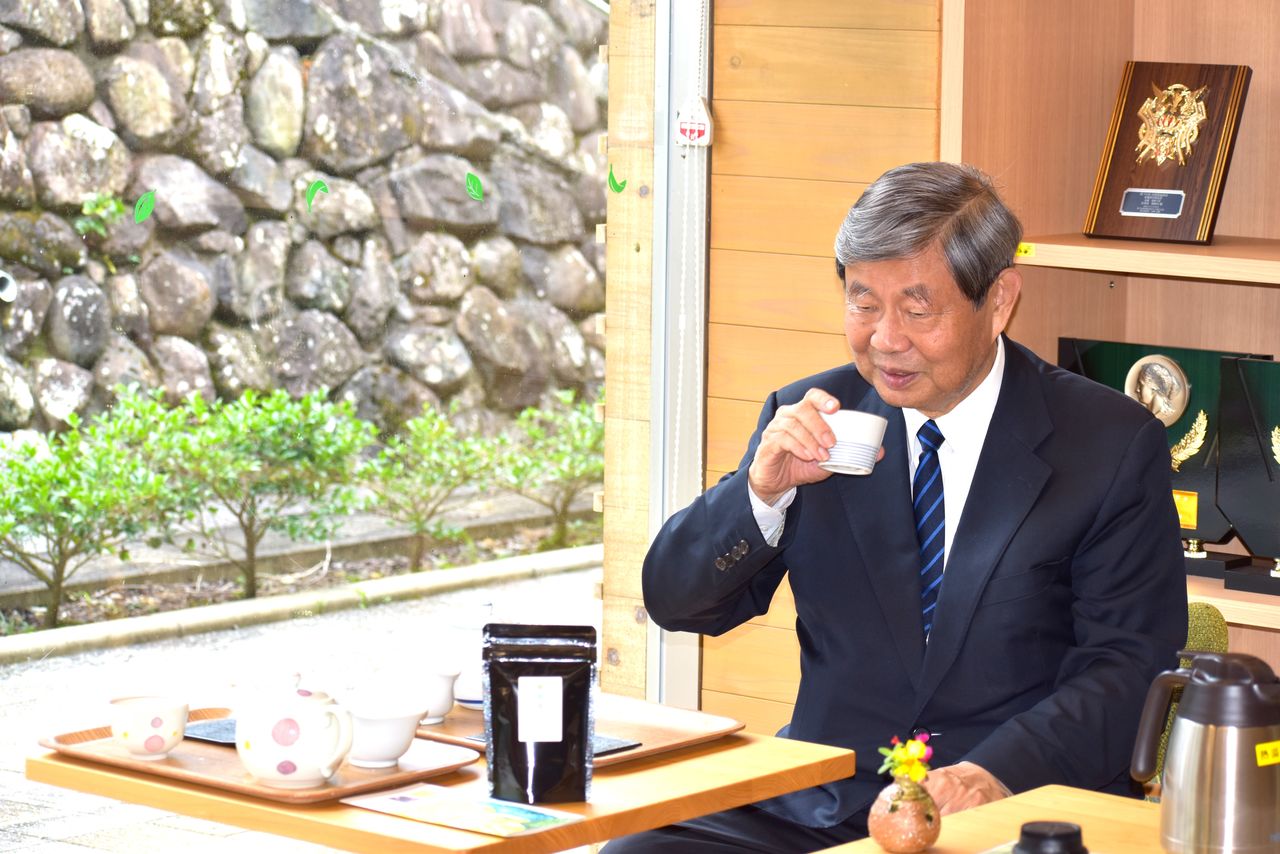
Muraoka Yasuhiro, president of Muraoka Sōhonpo, an old-line seller of Ogi yōkan sweet bean jelly, enjoys a cup of Ureshino black tea at the Ureshino “Cha o shiru” Tea Center. Wakōcha pairs well with Japanese confectionery.
Start of a Wakōcha Revival
Japanese black tea, or wakōcha, is domestically produced black tea made from tea leaves grown in Japan. This tea may also be called jikōcha (craft black tea) or Nihon kōcha (Japan black tea).
Production of black tea in Japan began in 1874 when the Meiji government distributed a manual on black tea manufacturing to growers in each of the country’s prefectures. In line with national policy at the time, the aim was to promote the export of black tea in order to earn much needed foreign currency. While black tea was a leading export industry for a time, the domestically produced variety virtually disappeared following liberalization of black tea imports in the postwar years.
Production of domestic black tea started up again in earnest in the 1990s, as green tea producers everywhere in Japan tried their hand at producing wakōcha. Today, producers of Japanese black tea can be found throughout the country, from Miyagi Prefecture and other parts of the Tōhoku region in the north to Kyūshū and Okinawa in the south.
In May this year, the first bids for domestic black tea were submitted at the Shizuoka Tea Market, in operation since 1956, where tea from all over the country is sold at auction. This is truly a milestone in the wakōcha “renaissance.”
Promoting Ureshino Kōcha
Nakajima’s life parallels the story of wakōcha’s revival. The third-generation proprietor of his family’s farm, which has operated in Ureshino for 110 years, he spent two years studying at the Tea Division of the National Agriculture and Food Research Organization in Shizuoka Prefecture after graduating from high school. On his return to Ureshino, he married wife Chizuko, who hails from a non-farming family, and together they worked at tea-growing. They also began producing wakōcha, and today they operate the 4-hectare tea farm.
The turning point in terms of wakōcha came for the couple in 1997. A local friend invited Nakajima to set up an Ureshino-themed refreshment stand at a tableware festival held at the Tokyo Dome in Japan’s capital. This paved the way for direct sales of Ureshino Kōcha, and Nakajima’s stand has become a regular fixture at the event.
Nakajima is now passing the baton of the wakōcha revival to his 30-year-old son Keisuke. The fourth generation of his family in the business, Keisuke is a member of the Ureshino Kōcha Promotion Council, a group of young tea producers who work to improve product quality and build up the brand.
A New Generation Nurtures Sawatari Tea
Kishimoto Mika manages the Tea Farmer’s Shop Asunaro in Niyodogawa, Kōchi Prefecture. She describes her farm’s branded wakōcha as “less tart than black tea from abroad, and subtly sweet. It has a pleasing aroma, is popular with female customers, and goes just as well with Japanese cuisine as with sweets.”
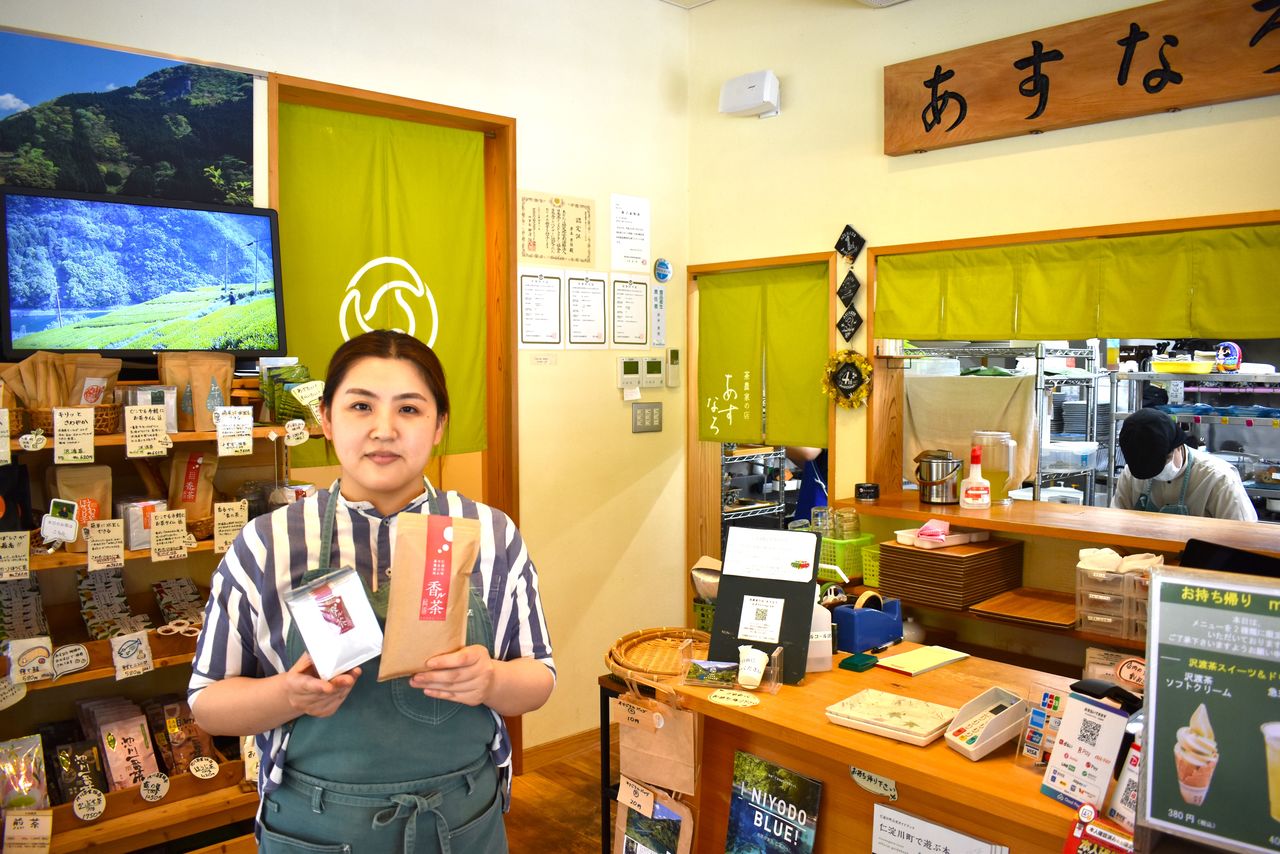
Kishimoto Mika shows off her shop’s wares.
Kōchi’s Sawatari district has long been known among tea connoisseurs for producing Tosa tea. Fields of tea bushes cling to the steep slopes of the valleys along the Niyodo River, famous for its limpid blue waters. But the area’s population is aging, tea farms are shutting down, and tea plantations are going untended.
Kishimoto initially lived in Kōchi, the prefecture’s capital, with her husband Noriaki. But the pair, wanting to preserve the beautiful, stepped terraces of tea bushes, decided to move to Niyodogawa in 2004 with their daughter to take over Noriaki’s grandfather’s tea farm. Noriaki learned the ins and outs of tea cultivation from his grandfather while holding down a regular job at a local company, and became a full-time tea grower seven years later.
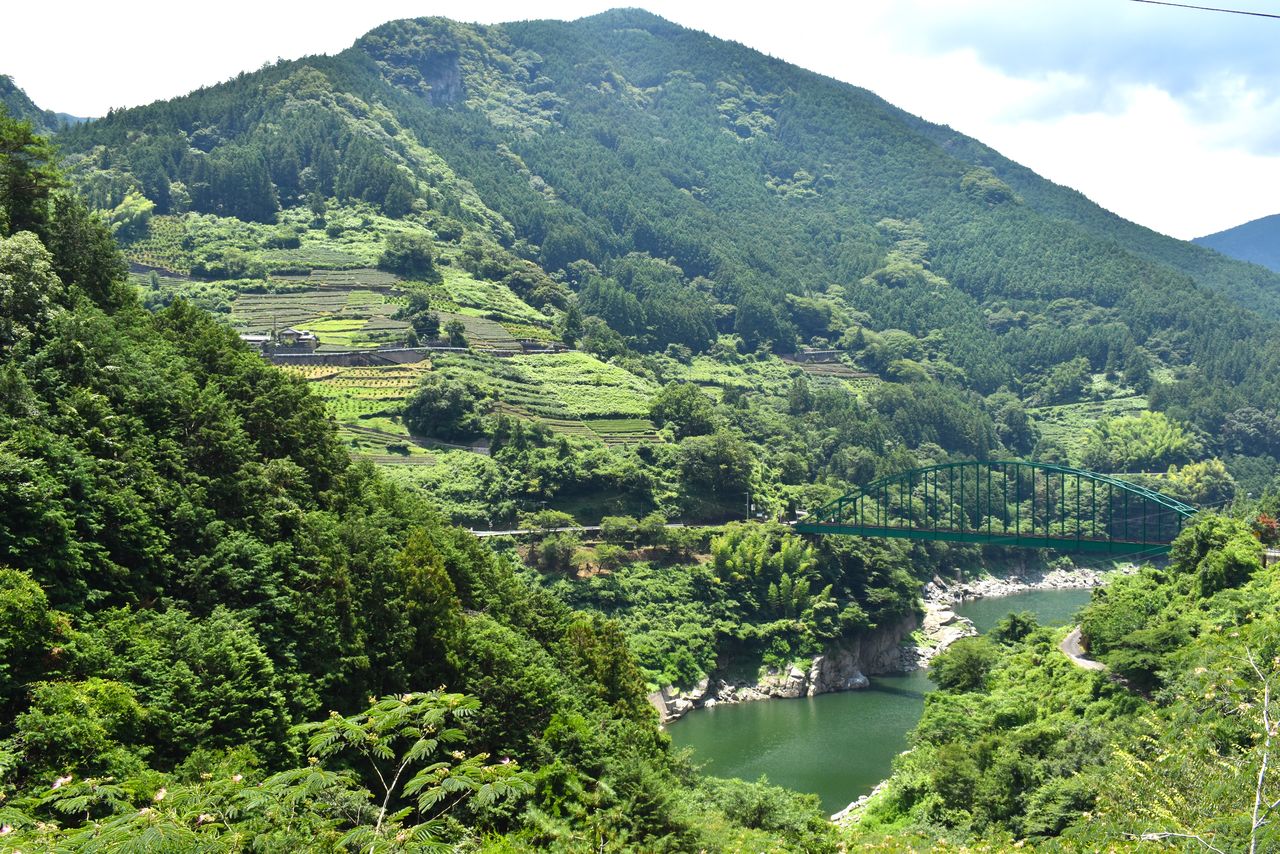
A tea plantation on the steep slopes of the Sawatari district along the Niyodo River.
The Kishimotos opened their café Asunaro in 2018. The shop features a terrace that affords a beautiful view of the river below. Mika says that visitors from abroad sometimes drop by, having learned of the café through social media. Most are from Taiwan, Hong Kong, China, or other parts of Asia, although prior to the COVID-19 pandemic, customers also came from as far away as Europe and North America.

Customers take in the view while enjoying a cup of wakōcha at Asunaro.
More Wakōcha Shops and Books
High-end fruit shop Shinjuku Takano is a long-established “fruit parlor” that also has a rich history as a retail outlet for black tea. Takano set up the India Tea Center at its Shinjuku main store in 1973, making it a pioneer of the era’s black tea boom. In addition to teas from India, Sri Lanka, and other regions, the shop began carrying organic wakōcha this year, featuring varieties such as Benifuuki from Kagoshima Prefecture and Benihikari from Tottori Prefecture.
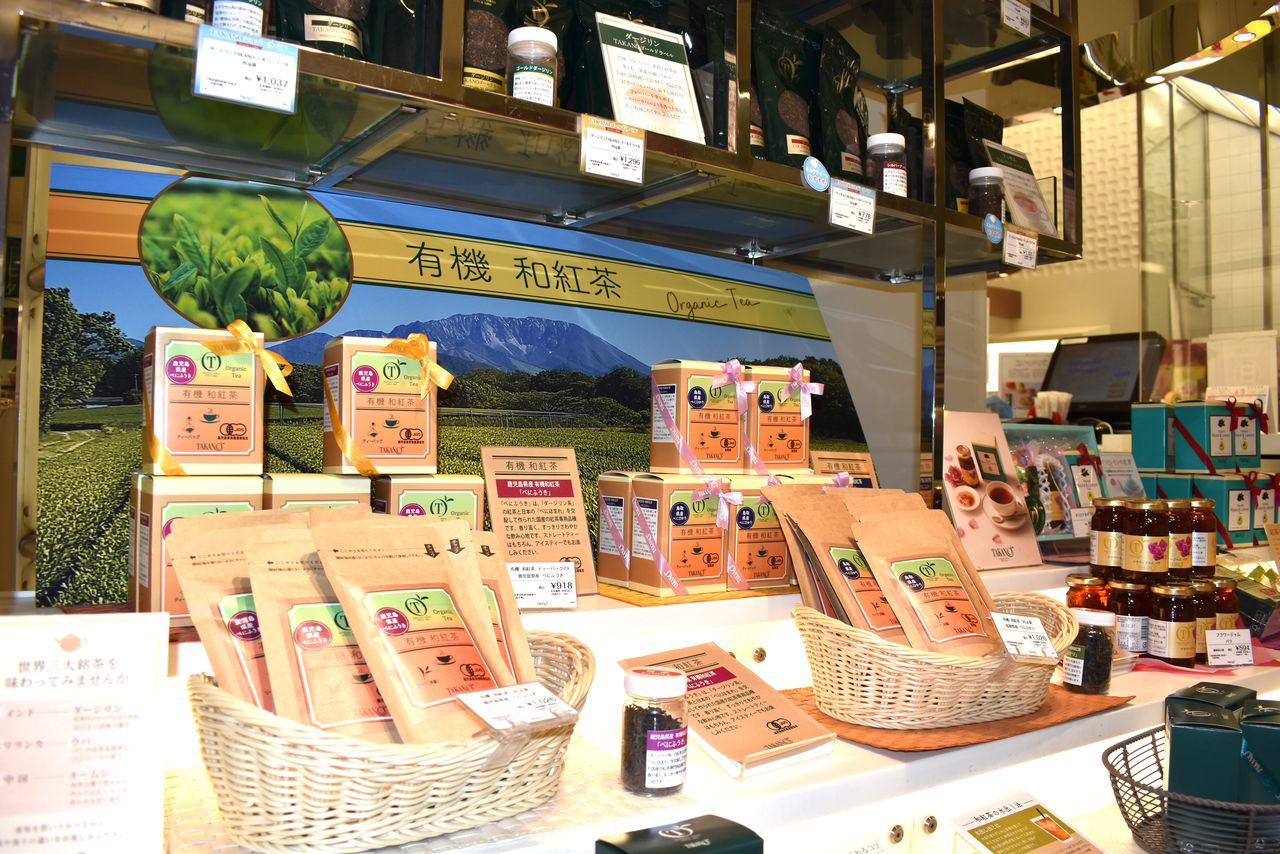
Organic wakōcha products on sale at upmarket emporium Shinjuku Takano.
Another shop specializing in wakōcha is Kureha in the prefectural capital of Saga. Located along the former Nagasaki Kaidō highway in a renovated 100-year-old traditional dwelling, the shop opened for business in 2001. It is managed by Okamoto Hiroshi, a native of Fukuoka Prefecture who switched careers after years working as a truck driver. The shop sells domestically produced black tea, which Okamoto personally selects after tasting it during visits to tea producers across the country.
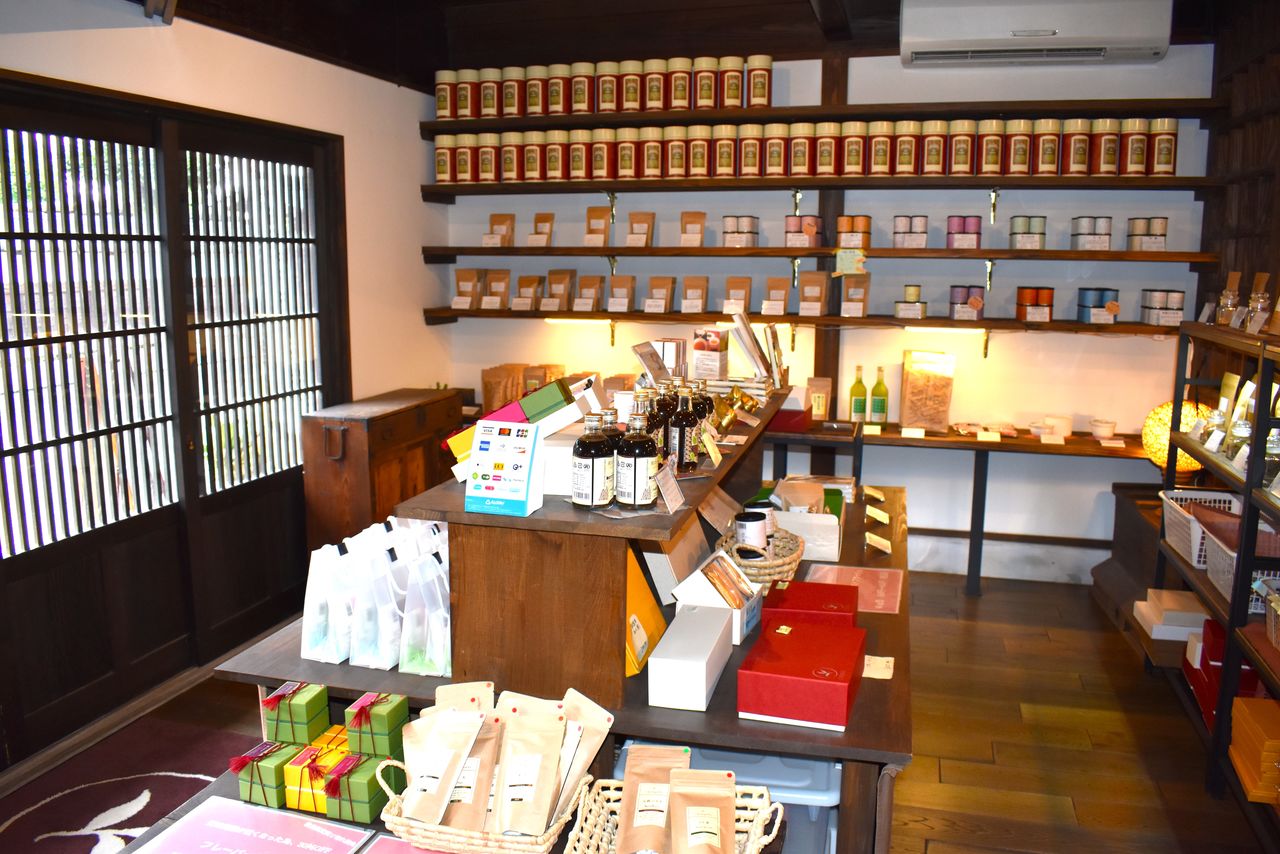
The interior of the Kureha wakōcha shop in Saga.
In May 2013, Okamoto published Wakōcha no hon (The Book of Japanese Black Tea), which gives tips on everything from choosing wakōcha to the best way to brew it. A second volume, Wakōcha pearingu (Wakōcha Pairings), was published in autumn 2023.
Nippon no jikōcha (Kanzen gaido) (A Complete Guide to Japan’s Craft Black Teas), under the editorial supervision of Fujiwara Kazuki, appeared in October 2019. It covers over 450 varieties of domestic black tea sold by 141 tea farms, tea manufacturers, and producer co-ops throughout the country.
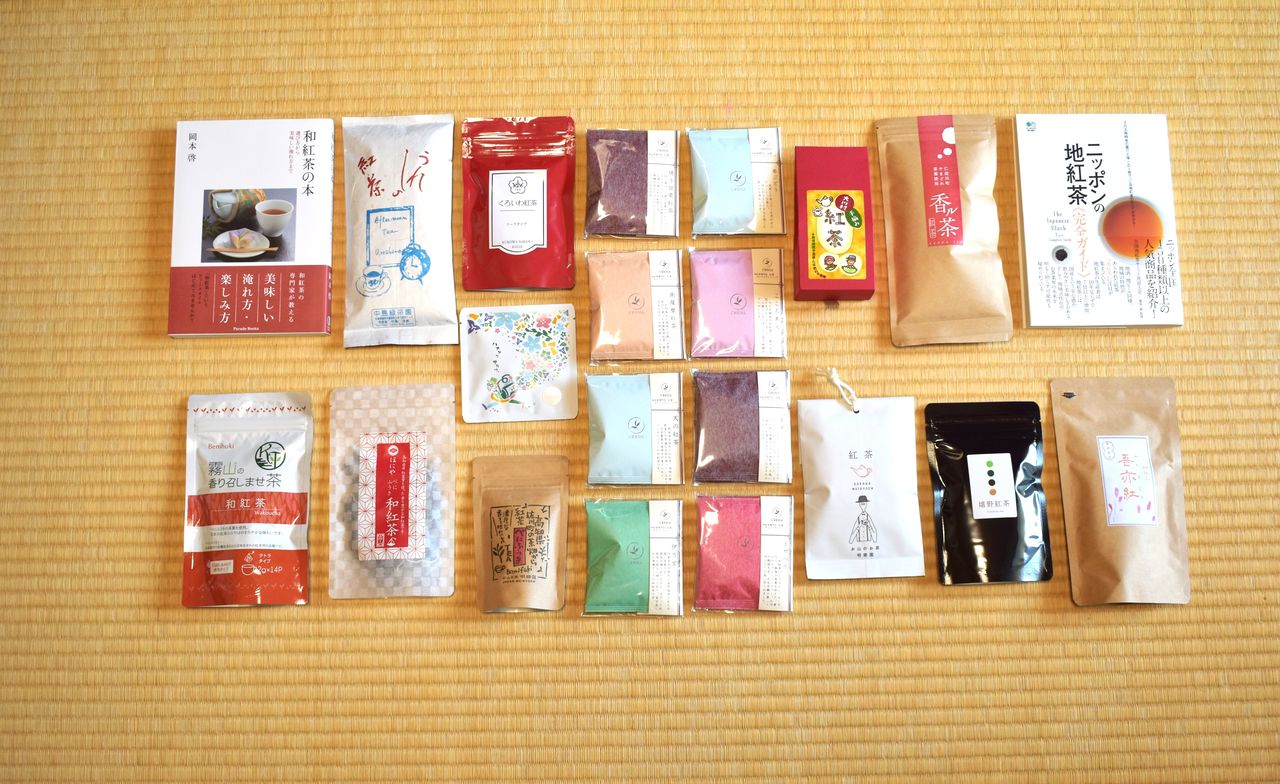
A selection of products and books on wakōcha.
Terroir Makes Tea Shine
Wakōcha has evolved markedly in the past few years. In October 2022, a wakōcha entry in the green tea, oolong tea, and white tea category was chosen “best in the world” among some 300 entrants at a competition in London held by tea certification organization the UK Tea Academy.
Benifuuki Second Flush, grown by the Kajihara Tea Garden in Ashikita, Kumamoto Prefecture, won the Gold Award in the China, Taiwan, Myanmar, Vietnam, and Japan division of the black tea category. It was also honored as “Best in Show,” selected from among the Gold Award winners in all categories.
Kajihara Toshihiro, third-generation proprietor of the Kajihara Tea Garden, attended the Kumamoto Prefecture Agricultural College, where he studied tea cultivation before returning to the family tea farm at the age of 20. Dedicated to his calling, he also trained in Taiwan and China. Modestly describing his business as “a small farm,” he grows tea without pesticides or chemical fertilizers in isolated fields in the mountains, where there is dense fog, day and nighttime temperature fluctuations, and pure air and water. These local conditions have been a winning combination for helping to grow the farm’s fine black tea.
The wine world speaks of terroir, the interplay of local soil conditions and climate that produces a wine’s distinctive taste characteristics. The book Terowāru: Wain to cha o meguru rekishi, kūkan, ryūtsū (Terroir: The History, Place, and Logistics of Wine and Tea) notes that “terroir will increasingly be used in branding native teas like Ureshino, Yame, and minor varieties, and the teas produced by small plantations in mountainous areas located relatively close to processing facilities.”
The story of wakōcha’s revival is a fascinating one, influenced no doubt by the seasonal climatic variations of Japan’s regions, the varied life trajectories of tea plantation owners, many of whom are small-scale operators, and the close relationship between producers and consumers.
(Originally published in Japanese. Banner photo: Nakajima Hirotoshi, head of the Nakajima Green Tea Garden, stands in one of his tea fields. All photos © Izumi Nobumichi.)